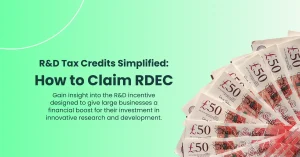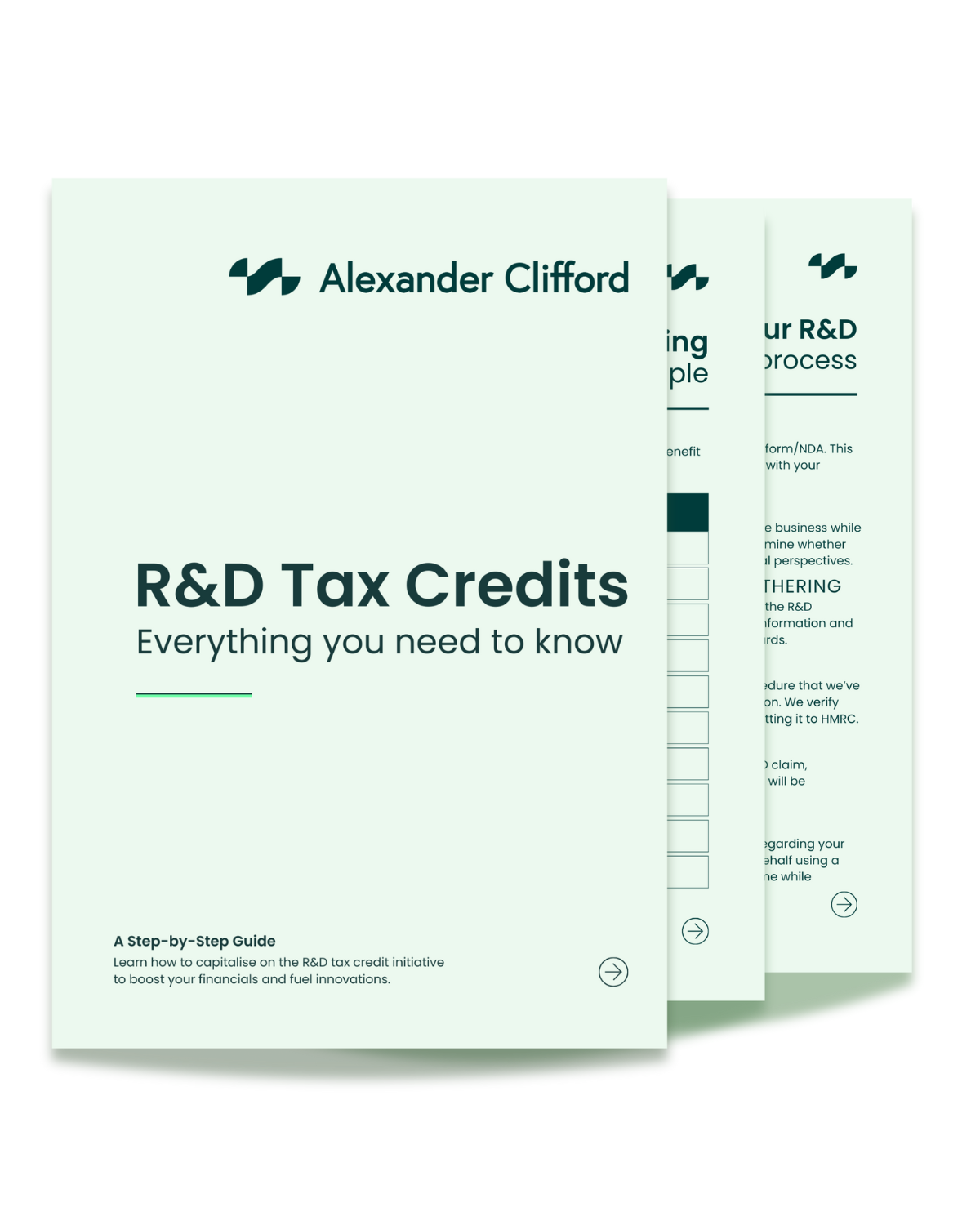A guide to creating an R&D technical report

The R&D technical report, also known as the technical narrative, is a vital part of the R&D tax credit claiming process. It is separate from the financial report and functions as an opportunity to detail the progress of your project during a tax year. However, HMRC has not published any standardised format for the technical report that could assist claimants. Using our experience of completing over 2400 R&D claims for a variety of different industries, we’ve funnelled our knowledge of the technical report into this article to guide you through the writing process.
What is the R&D technical report?
The R&D technical report is a detailed document which shows HMRC exactly how you made “an advance in overall knowledge of capability in a field of science or technology”. It accompanies your financial report and showcases that the money you spent was on genuine research and development endeavours. Essentially, this is a key document for claiming R&D tax credits, which demands compelling and in-depth writing expertise aimed at addressing all of HMRC’s potential questions. They’ll be able to swiftly identify how you meet the R&D eligibility criteria from reading the R&D report. Previously, it was optional to accompany your claim with a technical narrative, however, as per the R&D changes of 2023, it is now compulsory to submit this technical information.
A successful R&D technical report will result in swift repayment of R&D costs, as per the UK government’s innovation-focused incentive. The government actively encourages R&D projects by offsetting the tax liabilities of qualifying businesses or providing cash credits for qualifying businesses. Eligible R&D costs that businesses can retrieve money from include staff costs, National Insurance contributions, subcontractor costs, travel, and more.
The entire report needs to be concise and requires an in-depth awareness of the latest legislation around the R&D initiative to prevent the chances of receiving an HMRC compliance check that delays you from receiving your claimed amount.
What should be included in an R&D technical report?
There is no set length for a technical narrative. Generally, it will be determined by the size of your claim and the scope of your project. Nonetheless, a robust R&D report needs to have the following information:
- Key information about your company – an overview detailing your company name, number, Unique Taxpayer Reference (UTR), the industry, business operations etc.
- Contact details for the key personnel – names, designations, and the qualifications of the competent professionals involved in the R&D project in the form of concise biographies.
- Details of your project(s) – a comprehensive overview of your project. Clarify the sought advances; what were you trying to achieve? What spurred the idea, what was the mission behind your efforts? Go into detail about the various stages of your project, and the trials that naturally arose in the process. What resources did you use and what processes did you have in place for your project?
- The industry benchmark – you need to be trying to attempt to go beyond what is already known by professionals in your industry. To show this in your technical report, you can explain what level your competitors have achieved and outline how you aim to go to the next level through innovation.
- Explanation of the uncertainties or challenges faced – what stood in your way during the project that stopped the project from being seamless and simple? You need to showcase how the answers weren’t readily available to you, and the presence of uncertainties shows this. So go into detail about those head-scratcher moments and times when you didn’t think you’d overcome this problem because this is what makes clear to HMRC how you made a technical or scientific advancement.
Best practices for writing an R&D technical report
As mentioned before, there is no standard format for presenting your technical report. However, you can strengthen your claim by using these tips:
Give yourself enough time to create it
You need to explain in depth the ins and outs of your R&D project so make sure you know the due date so you’re not rushing the writing and missing out on important details.
Structure in the right way
Make it super simple for HMRC to understand with clear headings and write in chronological order. It will also need to be written in the third person. Keep it straight to the point with concise paragraphs.
Make sure to review and fact-check
HMRC expects accuracy. Once you’ve written the R&D technical report, check it next to your project documentation to ensure all facts and figures are aligned. Don’t let simple mistakes be the reason you receive an HMRC enquiry. Clarify the start and end dates of your project. HMRC are increasing their vigilance over R&D claims to prevent fraud of the incentive to be proactive in providing accuracy.
Include visual aids
These could be prototype designs, visual aids, charts, or blueprints. These help show the thinking behind your project and how this thinking progressed throughout the project’s timeline.
Don’t overfill it with jargon
The person responsible for determining your project’s eligibility with the R&D scheme is unlikely to have a background in your field. Keep this in mind as you write and explain concepts to the reader rather than stuffing it with jargon when demonstrating how you went past existing knowledge in your industry. Aim to ensure you answer every question HMRC may have about your project.
Don’t shy away from discussing failures
Even unsuccessful projects (didn’t meet their mission just yet or haven’t turned a profit) can benefit hugely from R&D tax credits. Any failures and mistakes you learnt from during your project demonstrate just how big the uncertainty was that you were attempting to solve. They’re just as noteworthy as milestones in the eyes of HMRC. So, mention what frustrations came up and how you handled them.
How many projects do I need to mention in a technical narrative?
You may have had multiple R&D projects ongoing simultaneously. You don’t necessarily have to write about all of them, here is what you need to do:
- If the number of projects ranges from 1 to 3 – you will need to include all of the projects.
- If your projects range from 4 to 10 – you must provide a minimum of 3 project descriptions (providing details through the technical report). Between these 3 projects, they need to cover at least 50% of total R&D costs.
- If there are more than 10 projects – describe a minimum of 3 projects, sufficient to represent those constituting at least 50% of your overall expenditure. If your eligible expenses are distributed across several smaller projects, focus on detailing the most recent ten projects.
Key takeaways
Crafting a meticulous R&D technical report is paramount for a successful R&D tax credit claim. Ensure to include all crucial aspects of your R&D project, such as the challenges encountered and strategies to overcome uncertainties, in order to mitigate the risk of potential penalties from HMRC. An expert review of the R&D report significantly contributes to streamlined R&D tax credit processing and financial benefits for eligible businesses.
How can we help with your R&D technical report?
The importance of consulting with an R&D tax credit specialist cannot be understated in this regard. We have in-house technical advisors who know these R&D reports inside out, capturing all the essential information accurately on your behalf. Our processes have so far secured over £83 million for our clients. We would learn about your project through a technical call where we gather the key information we need to create a precise and accurate technical narrative as well as take full leadership over the financial side of the R&D claim.







